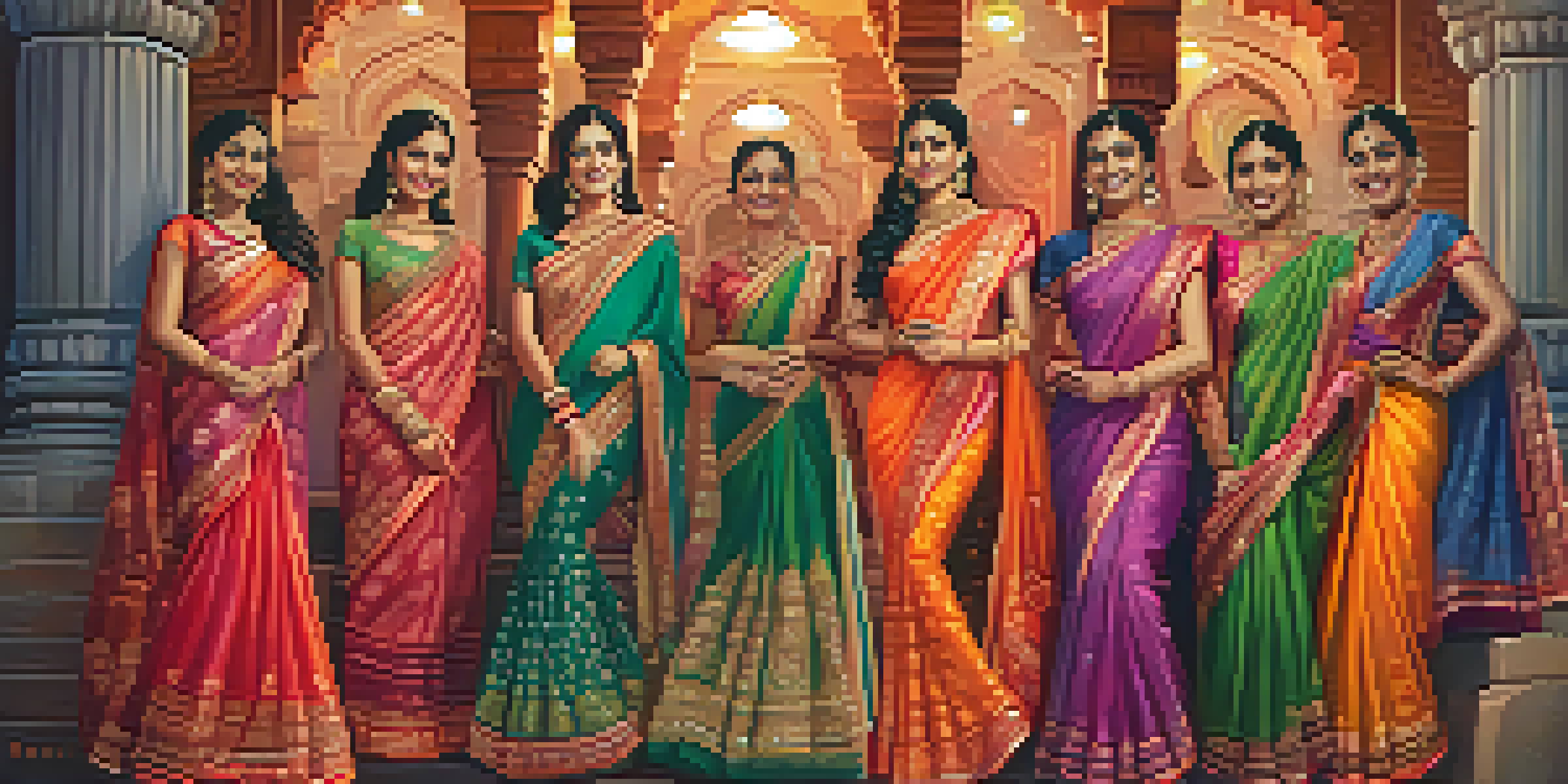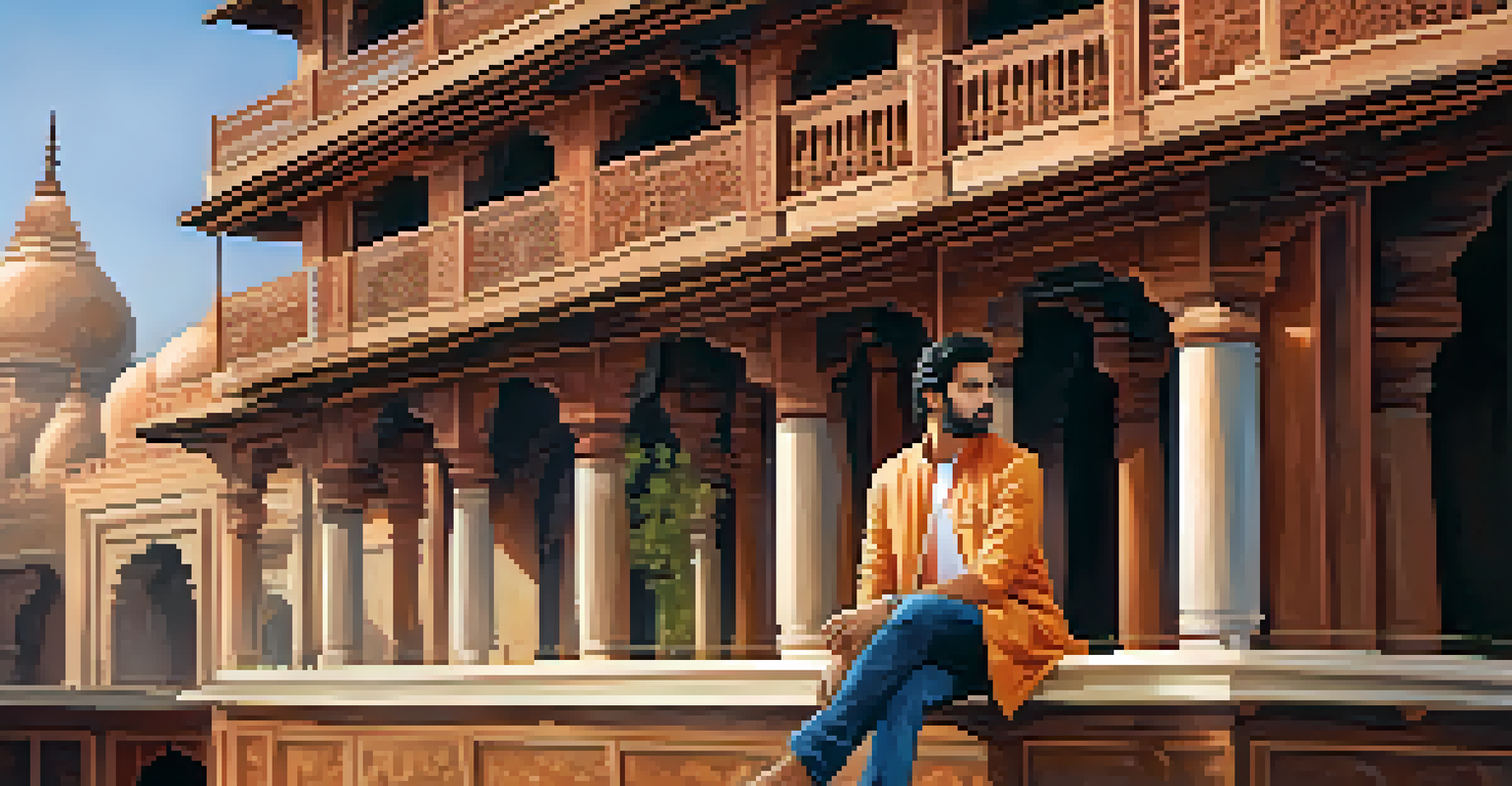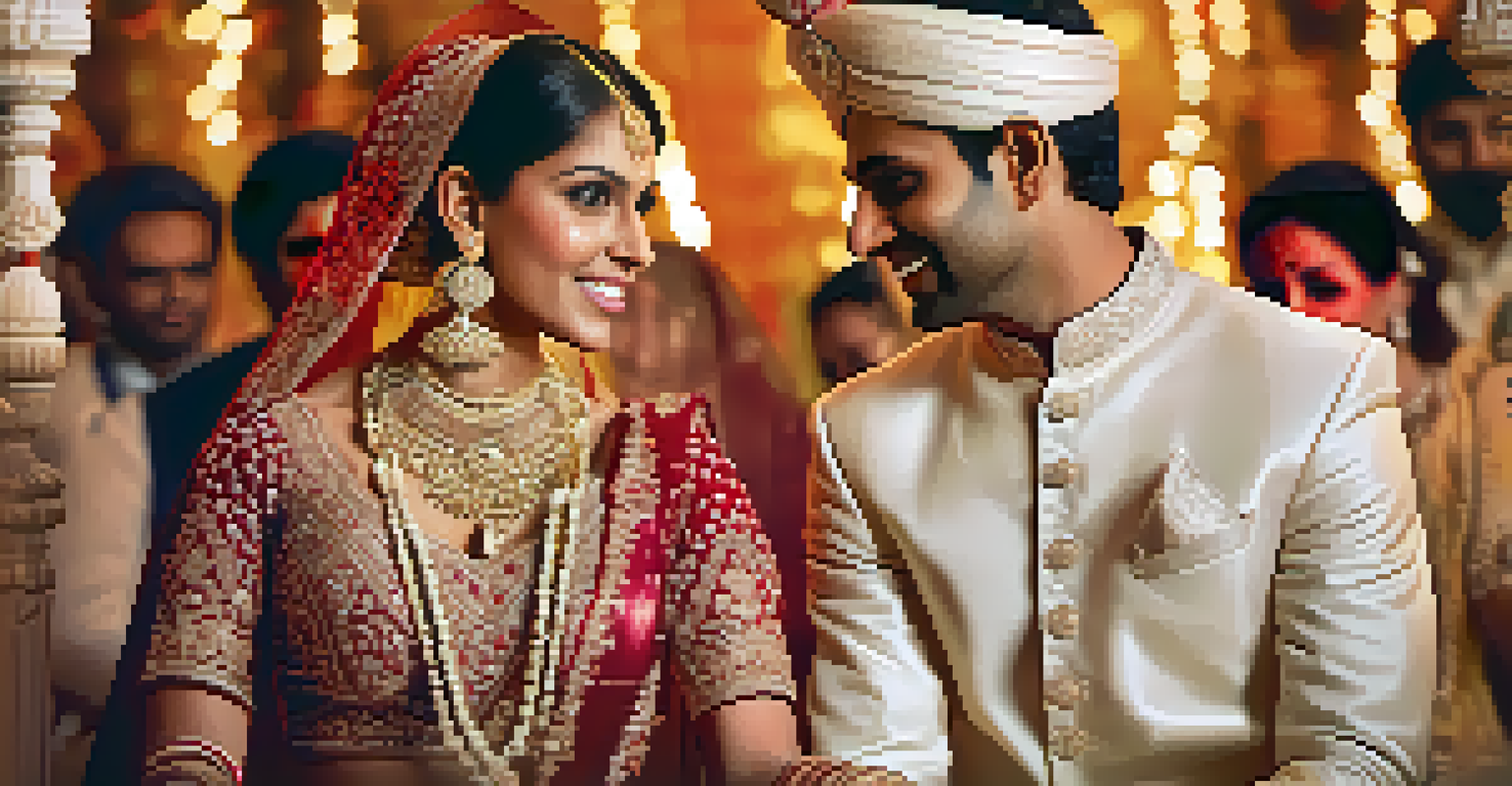Dress Codes in India: Traditional Attire and Modern Norms

Understanding Traditional Indian Attire Across Regions
India's traditional attire is a colorful tapestry, reflecting its diverse cultures. Each region boasts unique garments, like the saree in the South, the lehenga in the West, and the kurta in the North. These outfits often carry historical and cultural significance, showcasing the rich heritage of the land.
Fashion is the armor to survive the reality of everyday life.
For instance, the saree, a quintessential garment, is versatile and can be draped in various styles, adapting to different occasions. Similarly, the lehenga is often worn during weddings, adorned with intricate embroidery that tells a story of craftsmanship. Understanding these traditional garments is essential to appreciating India's rich cultural landscape.
Moreover, traditional attire is not just about fashion but also about identity. Many people wear these garments with pride during festivals, rituals, and cultural celebrations, reinforcing their connection to their roots and communities.
Modern Fashion Trends Influencing Dress Codes
As India embraces globalization, modern fashion trends are increasingly influencing traditional dress codes. Western styles, such as casual jeans and t-shirts, have made their way into everyday wear, especially among the youth. This blending of styles creates a unique fashion statement that resonates with the contemporary Indian lifestyle.

Fashion designers are now experimenting with fusion wear, combining traditional elements with modern silhouettes. For example, pairing a traditional kurta with denim or adding a western twist to a saree can create a fresh and appealing look. This evolution reflects a society that values both tradition and modernity.
Traditional Attire Reflects Heritage
India's traditional garments, like sarees and kurtas, showcase the country's rich cultural diversity and historical significance.
However, it's essential to note that this shift doesn't undermine the importance of traditional attire. Instead, it encourages a dialogue between the old and the new, allowing individuals to express their identities in multifaceted ways.
Dress Codes in Indian Workplaces: A Balancing Act
In professional settings, dress codes in India often reflect the blend of traditional and modern attire. While many companies encourage formal wear, there is a growing acceptance of ethnic clothing, such as kurtas for men and salwar kameez for women. This shift signifies a more inclusive approach to workplace attire, acknowledging cultural diversity.
Clothes mean nothing until someone lives in them.
For instance, many workplaces now host 'Ethnic Days' where employees are encouraged to wear traditional outfits. These initiatives not only foster a sense of community but also celebrate the rich cultural backgrounds of employees. It's a fun way to break the monotony of formal wear while honoring one's heritage.
Nevertheless, it’s important for professionals to gauge the company culture before dressing. Some industries may still prefer a more formal appearance, so finding a balance between personal style and professional expectations is key.
Cultural Significance of Dress Codes in Festivals
Festivals in India are vibrant, colorful affairs, and the dress codes associated with them reflect this exuberance. From Diwali to Holi, people don traditional attire that often symbolizes prosperity and joy. For example, during Diwali, women wear sarees with intricate designs, while men might don kurtas or sherwanis, showcasing the festive spirit.
These traditional outfits are not just for aesthetic appeal; they carry cultural meanings and rituals. Wearing specific colors or styles during festivals can signify blessings, good luck, or community bonding. This practice helps individuals connect with their cultural roots and celebrate their heritage.
Fusion of Modern and Traditional Styles
Contemporary fashion trends are blending with traditional attire, allowing for innovative styles that celebrate both heritage and modernity.
Moreover, festivals provide a platform for creativity in fashion. Many people opt for contemporary twists on traditional garments, like experimenting with colors or modern cuts, making the festival attire a unique blend of tradition and innovation.
Regional Variations in Dress Codes: A Closer Look
India's vast geography results in remarkable regional variations in dress codes. For instance, the traditional attire of Punjab, characterized by vibrant phulkari patterns, contrasts sharply with the elegant simplicity of a Tamil saree. Each region's climate, culture, and history play a crucial role in shaping its fashion choices.
In the Northeast, traditional garments like the mekhela chador are worn with pride, showcasing unique weaving techniques and designs. Meanwhile, in Gujarat, the colorful chaniya choli is a staple during festivals, reflecting the lively spirit of the state. These regional differences enrich India's cultural fabric, making it a fashion wonderland.
Understanding these variations helps foster respect and appreciation for the diversity within Indian culture. It reminds us that fashion is not merely about clothing; it is an expression of identity and a celebration of heritage.
Influence of Bollywood on Dress Codes in India
Bollywood has a significant impact on fashion trends and dress codes in India. The film industry's glamorous portrayals of traditional and modern attire often set the stage for what becomes fashionable. Fans and fashion enthusiasts eagerly emulate looks seen on their favorite stars, making Bollywood a powerful influencer in the realm of clothing.
For example, iconic movie scenes have popularized certain styles, such as the lehenga worn in wedding songs or the classic saree drape seen in romantic sequences. This phenomenon often leads to a surge in demand for specific outfits, with designers crafting collections inspired by these films.
Diverse Dress Codes in Workplaces
Indian workplaces are increasingly embracing ethnic clothing, reflecting a more inclusive approach to professional attire.
Moreover, Bollywood also plays a role in breaking stereotypes about traditional attire. By showcasing modern interpretations of ethnic wear, the industry encourages a more inclusive approach to fashion, appealing to younger generations who wish to embrace their cultural heritage while staying trendy.
The Future of Dress Codes in India: A Fusion of Styles
Looking ahead, the future of dress codes in India seems to be a harmonious blend of traditional and modern styles. As globalization continues to exert its influence, we can expect to see more innovative designs that marry cultural heritage with contemporary fashion. This fusion not only caters to evolving tastes but also celebrates India's rich textile and craft traditions.
Sustainable fashion is also gaining traction, with an increasing number of designers focusing on eco-friendly materials and ethical practices. This shift encourages consumers to make mindful choices while embracing fashion that tells a story. The future is about wearing outfits that resonate with personal values and cultural significance.

Ultimately, the evolving dress codes reflect the dynamic nature of Indian society. As people continue to express themselves through their attire, we can anticipate a vibrant fashion landscape that honors tradition while embracing modernity.